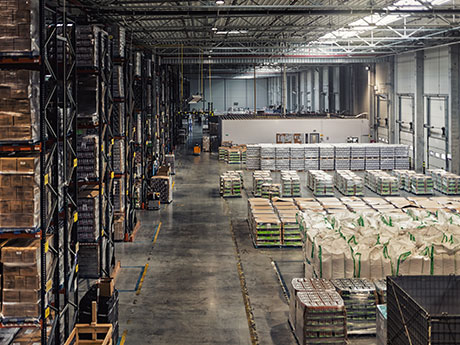By Chris Mergenthaler, DarwinPW Realty/CORFAC International
The Windy City, as Chicago is often dubbed, has long been a vital hub of commerce and industry. Boasting 19 intermodal facilities operated by six Class I railroads, a top 15 worldwide cargo airport, and sitting at the confluence of seven interstate highways that allow goods to reach 25 to 30 percent of the U.S. population within one day’s drive, Chicago’s central location makes it a key logistics and transportation hub.
The robust labor force of over 4.7 million nonfarm employees, according to a first-quarter 2024 U.S. Bureau of Labor Statistics report, coupled with Chicago’s location and infrastructure, lay the foundation for a fundamentally strong industrial market.

While the long-term outlook of the Chicago industrial market remains positive, the Windy City is facing some headwinds as the market progresses through 2024. Uncertainty, whether positive or negative, has been a common theme of the Chicago industrial market since early 2023 as the market reacts to changing macroeconomic and geopolitical factors.
Uncertainty in the global supply chain, trade relations with other countries, as well as one of the longest freight market recessions in recent history, have led to an increase in direct and sublet space on the market. Tenants who had previously increased their square footage in anticipation of continued pandemic demand conditions, are now looking to right-size their operation and cut costs.
Additionally, while landlords had pushed for lease terms of seven to 10 years with minimal pushback from tenants, the market is now starting to see some shorter-term direct deals, as tenants push to remain flexible to the changing market. Overall vacancy for the Chicago market has increased to just over 5 percent, still historically low.
Higher interest rates have significantly slowed speculative new construction starts and overall investor and user sales activity in the market. Many developers, uncertain of future market conditions, are still holding off on speculative development, instead pursuing build-to-suit opportunities to reduce their risk.
Subjectively, there still appears to be a wide bid-ask spread between buyers and sellers in the market. However, contrary to the slowdown in velocity, there have been a few notable sales in the past quarter that have shown little to no decrease in the average per-square-foot sale pricing. Despite this, the deal cycle for sale transactions has significantly slowed over the past year with both occupiers and their lenders proceeding forward with increased caution and diligence.
Investor demand for properties has remained fairly steady compared to the end of 2023 with new capital entering the market. Demand from investors for industrial outdoor storage (IOS), which encompasses a wide array of low-coverage properties, has remained strong despite waning demand in the short term from some occupants of these spaces due to the aforementioned freight recession.
Focusing in on the O’Hare submarket of Chicago, one heavily occupied by transportation and logistics users, we have seen a slight increase in the vacancy rate hovering a little over 4 percent with a slight increase in sublet availability by roughly 50 basis points to around 1.1 percent.
Even so, rent growth in O’Hare has continued to increase, especially among older generation and smaller spaces. Over the past few years, lack of developable land in the submarket and favorable market conditions made it accretive for developers to assemble smaller, functionally obsolete single- and multi-tenant industrial spaces and business parks in the O’Hare market, subsequently reducing the availability of spaces and pushing rent growth on the remaining available space.
Additionally, because of its power infrastructure and data connectivity, the O’Hare market has become a coveted location for data center developers. With these developers willing to pay significantly more for a site than a typical industrial user, this has reduced the availability of traditional industrial space in the market. It has also impacted available power, in some cases limiting the power available to other industrial users. At last count, there were more than 10 data center facilities either proposed or under construction within the O’Hare market.
While there may be some turbulence in the Chicago market in the short term, Chicago’s location, infrastructure and resiliency make it well positioned to limit the extent of any market pullback and rebound fairly quickly.
Chris Mergenthaler is a vice president with DarwinPW Realty/CORFAC International. This article originally appeared in the June 2024 issue of Heartland Real Estate Business magazine.


